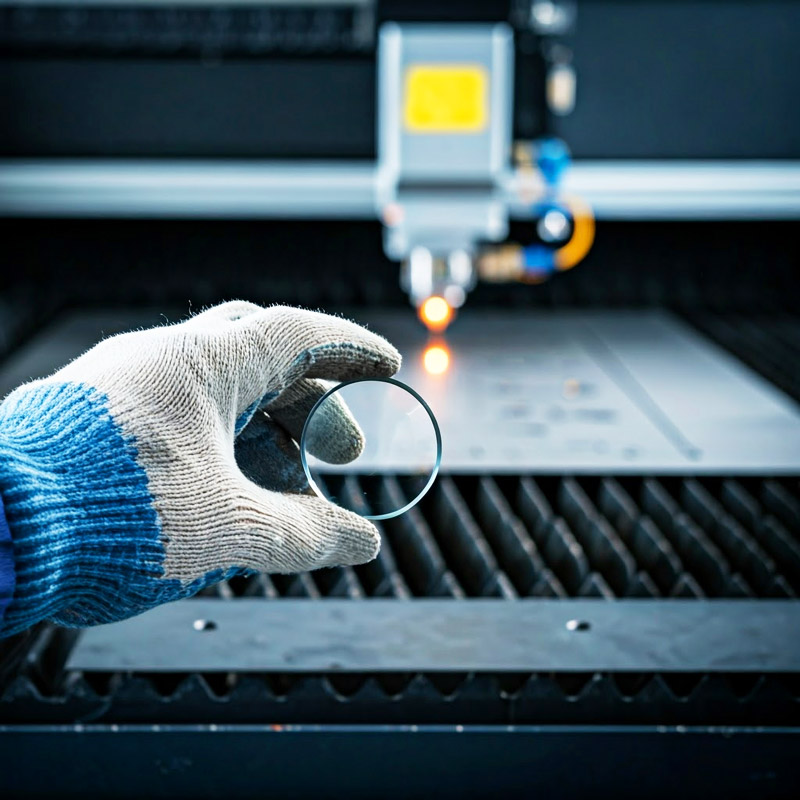When to Replace the Protective Glass on a Laser and How It Affects Cutting Quality

When to Replace the Protective Glass on a Laser and How It Affects Cutting Quality
The protective glass is a crucial part of any laser cutting machine. It shields the focusing lens and other optical components from contamination, metal splatter, and dust during cutting. Its condition directly affects cutting quality, the lifespan of your equipment, and even operator safety.
What is the protective glass in a laser machine?
The protective glass (also known as a protective window) is a replaceable component positioned in front of the focusing lens. It's made from special materials that can withstand high temperatures and laser radiation. Its main purpose is to protect the optics from dirt and damage.
Signs that it’s time to replace the protective glass:
-
Fogging or buildup on the surface
Even a thin layer of residue (condensation, dust, metal particles) can reduce the laser beam's transmission, leading to a drop in power and lower cutting quality. -
Scratches or micro-damage
These defects can scatter the laser beam, disrupt the focus, and cause uneven edges. -
Yellowing or darkening of the glass
Over time, high temperatures can cause the glass to change color — a clear sign it's no longer working effectively. -
Drop in laser power with unchanged settings
If you notice the laser is cutting worse or not penetrating the material as before, the protective glass could be to blame.
How does dirty or damaged glass affect cutting quality?
-
Reduced focusing accuracy — the beam becomes scattered and loses energy.
-
Burn marks and uneven edges — caused by incomplete cuts.
-
Lower productivity — you may need to slow down or do multiple passes.
-
Increased wear on the lens and other parts — contaminants can enter the system through the damaged glass.
How often should you replace the protective glass?
It depends on the type of materials you're cutting, the intensity of use, and the working environment. On average:
-
With heavy use (8 hours per day) — check and clean the glass daily, replace it every 1–2 weeks.
-
With moderate use — replace monthly or as soon as cutting quality drops.
💡 Tip: Always keep spare protective glass on hand and inspect it regularly against a light source. It's better to replace it early than to damage the lens or the entire laser head.
In conclusion
The protective glass may be a small component, but it plays a big role in laser system performance. Regular inspection and timely replacement will help maintain high cutting quality, extend the life of your equipment, and prevent costly downtime. Pay attention to the little things — and your laser will keep running smoothly and efficiently.
